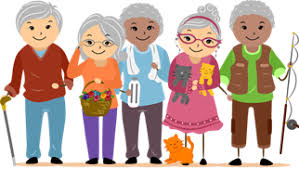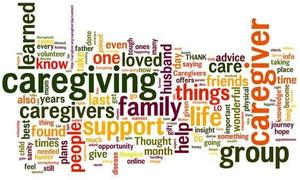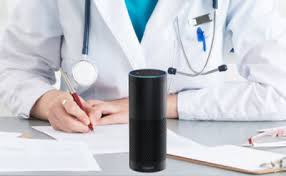 Google discovers seniors (sort of) and thus a market is maybe born. There was a breathlessness to the CNBC article on July 23, 2018 – Google is mulling older adult applications for its Nest product line – particularly in senior housing settings, hopefully at less cost per installation than its website pricing. And gee whiz, one of the uses is pathway lighting to find the bathroom – presumably replacing motion-sensing night lights for $7.97 from Walmart. Up next, predicting life-threatening falls, perhaps as an alternative to Philips CareSage or BioSensics Frailty Meter, for example. Google execs qualified our enthusiasm, per the article: “The ideas are only in the discussion stage and may not find their way into shipping products.” Since his role at Google is to do “something interesting” -- perhaps this may not turn out to be.
Google discovers seniors (sort of) and thus a market is maybe born. There was a breathlessness to the CNBC article on July 23, 2018 – Google is mulling older adult applications for its Nest product line – particularly in senior housing settings, hopefully at less cost per installation than its website pricing. And gee whiz, one of the uses is pathway lighting to find the bathroom – presumably replacing motion-sensing night lights for $7.97 from Walmart. Up next, predicting life-threatening falls, perhaps as an alternative to Philips CareSage or BioSensics Frailty Meter, for example. Google execs qualified our enthusiasm, per the article: “The ideas are only in the discussion stage and may not find their way into shipping products.” Since his role at Google is to do “something interesting” -- perhaps this may not turn out to be.
So one must ask -- has Amazon discovered seniors – sort of, but not overtly. Surely that would turn into a reason why Google (Nest or otherwise) would engage. People seem to think there is a list of Alexa skills and commands that are or could be useful. And in fact, a search on the Amazon site turns up many – but as for Amazon itself – well it is as stealth in intent as Google, only more so. Amazon may – or may not – collaborate with AARP on offerings for seniors. AARP has demonstrated its enthusiasm by creating an AARP Alexa ‘flash briefing’ skill that is ‘curated for the ‘50-plus crowd.’ Pause to contemplate a ‘crowd’ of 107.8 million (one-third of the US population) and what they may have in common with each other. Okay, never mind.
As for everyone else – people, service providers, and vendors get the utility. With Apple, a search for ‘elderly’ (turns up zip) and ‘seniors’ brings up the executive team. Their products are for ‘all’ people, no individual age-based market segments appear to matter. However, Apple has a robust Accessibilities feature list – though the featured photos are mostly of younger people. Which brings up an interesting point about market awareness, targeting, and fear of targeting. Today there are nearly 50 million people aged 65+ in the US, and one in five Americans will be at least that age in twelve short years. So what year is the right year for Google to be “shipping products” to benefit them? Or for Amazon to cultivate its own offerings and messaging and not its 2014 icky and short-lived one-stop shopping for defibrillators and adult diapers?
Are seniors different from other people? There are differences for sure – benefits eligibility and national age-based programs: age 62+ for Social Security, 65+ for Medicare, and age 50+ eligibility for AARP discounts. And also health statistics do not lie. Half of the aged 75+ population has a ‘disabling’ hearing loss – no doubt contributing to social isolation and poorer health, not to mention the 5+ million of the elderly living with Alzheimer’s and/or dementia. At the same time, all seniors can benefit from consumer technology advancement, particularly Voice First, which enables avoidance of squint-tap-and-touch and replaces that glass-based UI with everyone’s best skill – talking. Was that accidental innovation that benefits older adults? Maybe so (Amazon and Google aren’t saying) and if so, let there be more of these.
from Tips For Aging In Place https://www.ageinplacetech.com/blog/marketing-technology-are-seniors-different-other-people
 You saw the headline – America is running out of family caregivers. The numbers are daunting. Says Ken Dychwald in
You saw the headline – America is running out of family caregivers. The numbers are daunting. Says Ken Dychwald in  Voice First is changing health and wellness offerings today. Already the
Voice First is changing health and wellness offerings today. Already the  The business model of the Internet is crushing us. Rant on. We could start with Twitter, which is
The business model of the Internet is crushing us. Rant on. We could start with Twitter, which is  Considering the dog days of summer. Dog days – these are the
Considering the dog days of summer. Dog days – these are the  Time to Worry about Your Data
Time to Worry about Your Data Technology Designed for All.
Technology Designed for All. Are we really ready for self-driving cars?
Are we really ready for self-driving cars? Do we really want Amazon to win at everything?
Do we really want Amazon to win at everything?